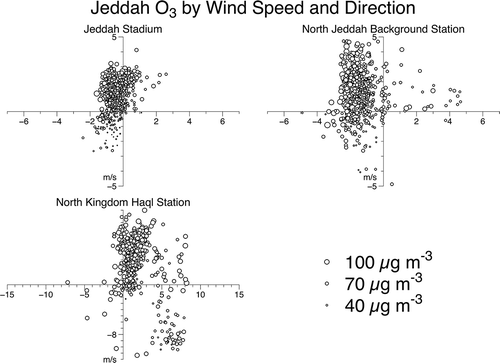Figures & data
Figure 1. Sampling station locations, with notable local emission sources indicated by letter-coded points (Khodeir et al., Citation2012). Sources include King Abdulaziz International Airport (A), a water treatment plant (B), a desalination plant (C), Jeddah Seaport (D), an oil refinery (E), and a power plant (F).
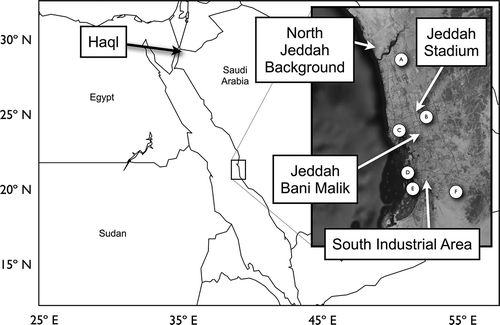
Figure 2. Total distributions of average daily temperature, NOx, PM10, and O3 for each site over 2010 and 2011. Horizontal lines on each box indicate quartile values (25th, 50th, and 75th percentiles). Whiskers show 5th and 95th percentiles. Station codes represent South Industrial Area (SIA), Jeddah Bani Malik (JBM), Jeddah Stadium (JST), North Jeddah Background (NJB), and North Kingdom Haql (NKH).
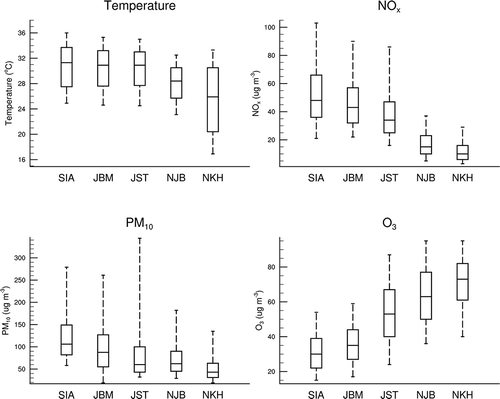
Figure 3. Average daily levels of O3 and concentrations of PM10 both at and upwind of Jeddah, along with values at other selected cities for comparison. Jeddah values represent averaged JBM, JST, and SIA sites, whereas background values are from the NJB site. Las Vegas and Phoenix values represent recent annual averages measured at U.S. Environmental Protection Agency Air Quality System (AQS) stations within those cities (U.S. Environmental Protection Agency, Citation2013). Abu Dhabi and Cairo values are taken from recent literature averages (Al Katheeri, Citation2012; Khoder, Citation2009; Zakey et al., Citation2008).

Figure 4. Binned probability distributions for NOx, O3, and PM10 at the five sampled sites by proximity to urban emissions. The North Jeddah Background and North Kingdom Haql sites are both represented by the white remote bars, whereas all other sites within Jeddah are represented in black. Gray areas indicate overlap between the two distributions. The higher, heavily skewed NOx emissions (top) of the urban sites within the Jeddah emission plume correspond to negative shifts in daily O3 concentration probabilities (middle). PM10 distributions (bottom) were qualitatively similar to the NOx distributions, with the frequency of PM10 extremes (>100 μg m−3) more than double at the urban sites.
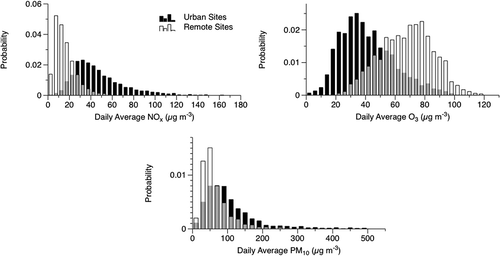
Figure 5. Monthly NOx distributions for all five sites. Horizontal lines on each box indicate quartile values (25th, 50th, and 75th percentiles). Whiskers show 5th and 95th percentiles.
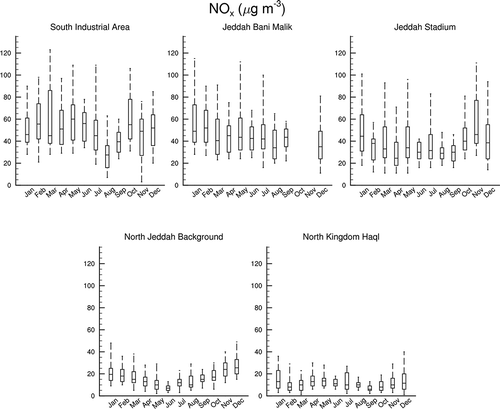
Figure 6. Monthly O3 distributions for all five sites. Horizontal lines on each box indicate quartile values (25th, 50th, and 75th percentiles). Whiskers show 5th and 95th percentiles.
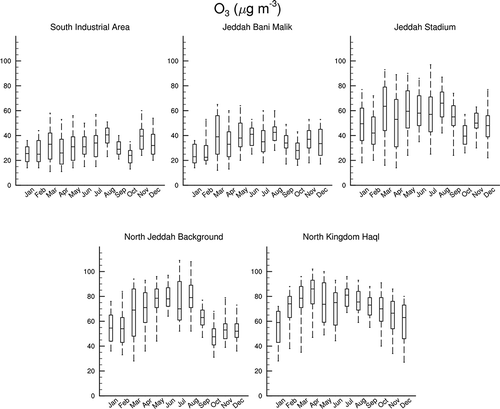
Figure 7. Monthly PM10 distributions for all sites. Horizontal lines on each box indicate quartile values (25th, 50th, and 75th percentiles). Whiskers show 5th and 95th percentiles.
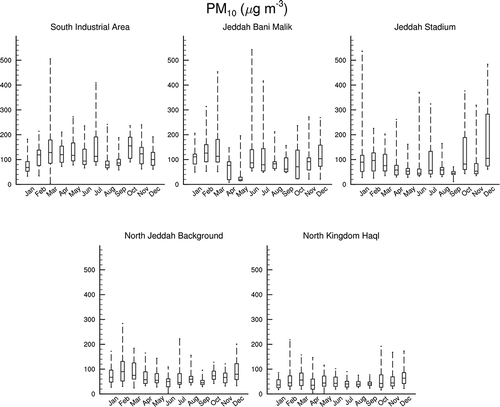
Table 1. Percent change in weekend versus weekday concentrations (all significant at 95% level)
Figure 8. NOx concentrations for three stations by wind speed and direction, with north represented as the positive y-axis. The central Jeddah Stadium site shows much higher NOx concentrations, with winds from the northwest leading to reduced NOx. The North Jeddah Background site also shows higher days, but only when winds are minimal or southerly, allowing urban emissions to arrive. The North Kingdom Haql site has almost uniformly low NOx concentrations, although strong winds from the southeast are associated with higher levels.
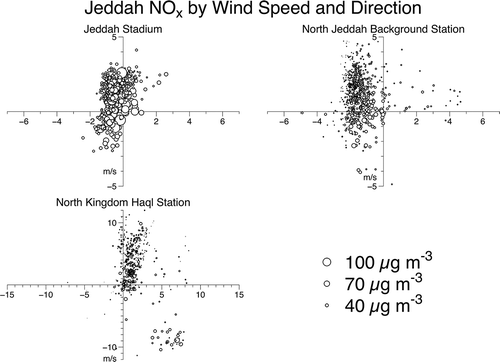
Figure 9. O3 concentrations for three stations by wind speed and direction, with north represented as the positive y-axis. The Jeddah Stadium site displays lower O3 overall, with higher levels apparent on windier days, whereas the two remote sites show uniformly higher levels, even on calm days.
